Nginx For Beginners
Security
HTTP Headers
HTTP headers are metadata exchanged between a client (e.g., your browser) and a web server. Much like the information on an envelope, headers indicate how to process the payload and which instructions to follow.
Request–Response Flow
When you navigate to a website:
- Your browser sends an HTTP request with request headers describing the desired resource.
- The server processes the request and replies with an HTTP response, including response headers that describe the returned content.
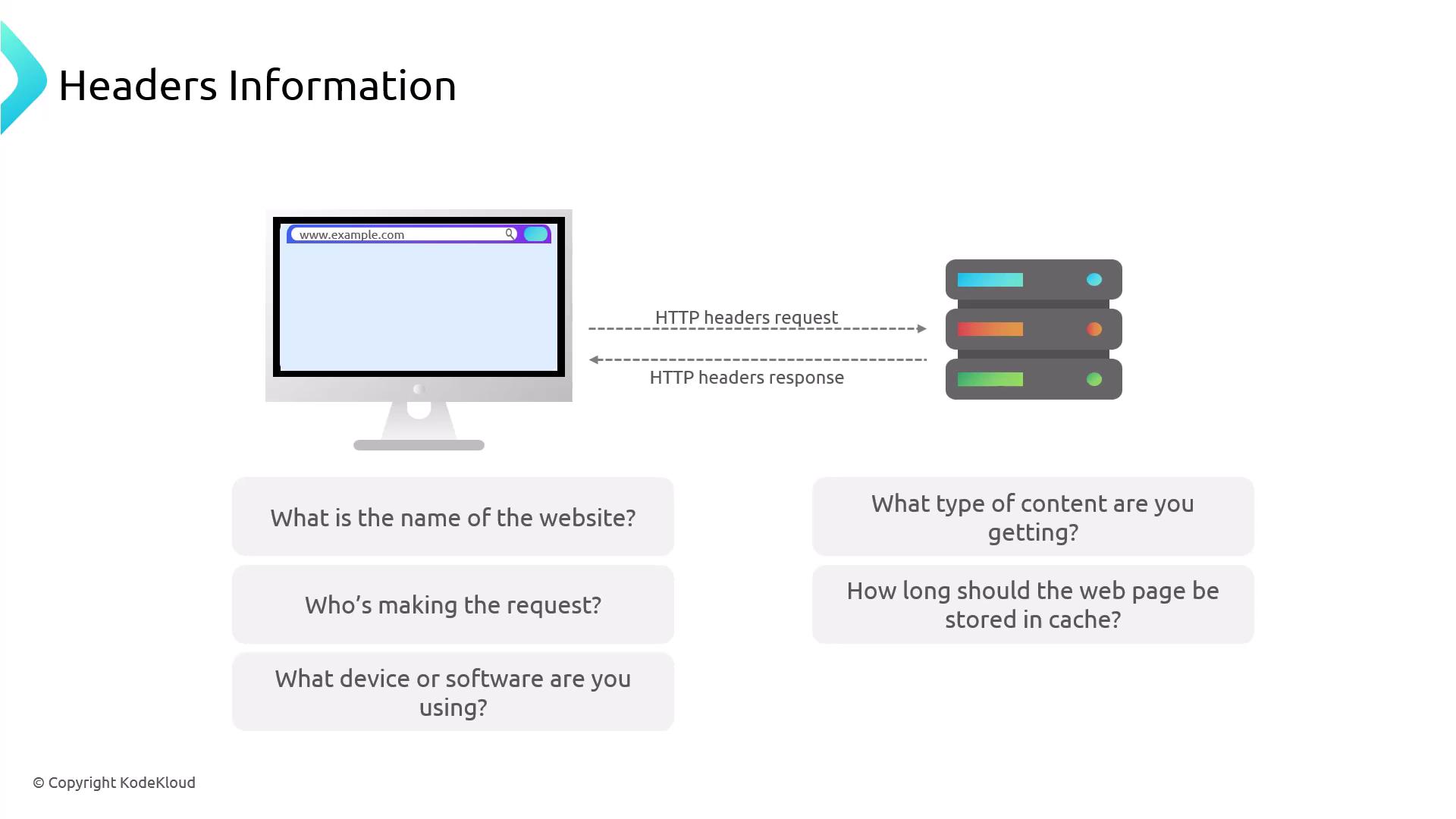
Anatomy of an HTTP Header
Each header line follows the format Key: Value. For example:
GET / HTTP/2
Host: example.com
User-Agent: Mozilla/5.0 (Windows NT) Firefox/103.0
Accept: text/html
Accept-Language: en-US
Connection: keep-alive
Cache-Control: no-cache
- Host: Specifies the target domain (
example.com). - User-Agent: Provides details about the client software.
- Accept: Indicates which content types the client can process.
- Cache-Control: Instructs caching behavior.
Note
In HTTP/2, pseudo-headers (like :method, :path) precede regular headers and always start with :.
Types of HTTP Headers
HTTP headers are grouped by their roles. Below is a visual overview followed by a summary table.
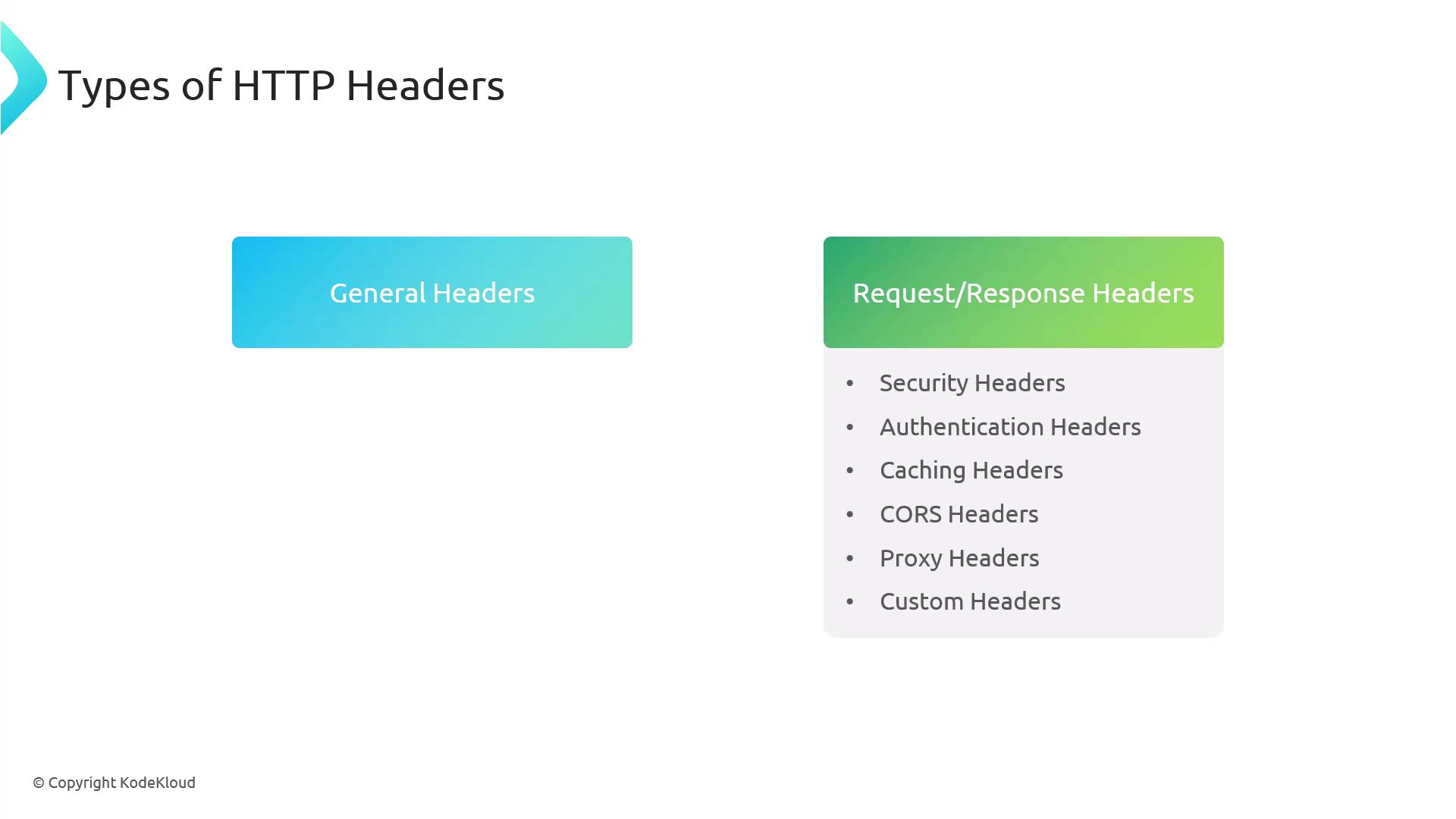
| Header Category | Purpose | Common Example |
|---|---|---|
| General | Used in both requests and responses | Connection, Cache-Control |
| Request | Sent by clients to servers | User-Agent, Accept |
| Response | Sent by servers back to clients | Content-Type, Server |
| Security | Mitigate web vulnerabilities | Content-Security-Policy |
| Authentication | Verify client identity | Authorization |
| Caching | Control resource caching | Expires, ETag |
| CORS | Enable cross-origin resource sharing | Access-Control-Allow-Origin |
| Proxy | Convey client info through proxies | X-Forwarded-For, X-Real-IP |
| Custom | Application-specific metadata | X-Custom-Header |
General Headers
General headers carry metadata applicable to both requests and responses, such as connection management and caching directives.
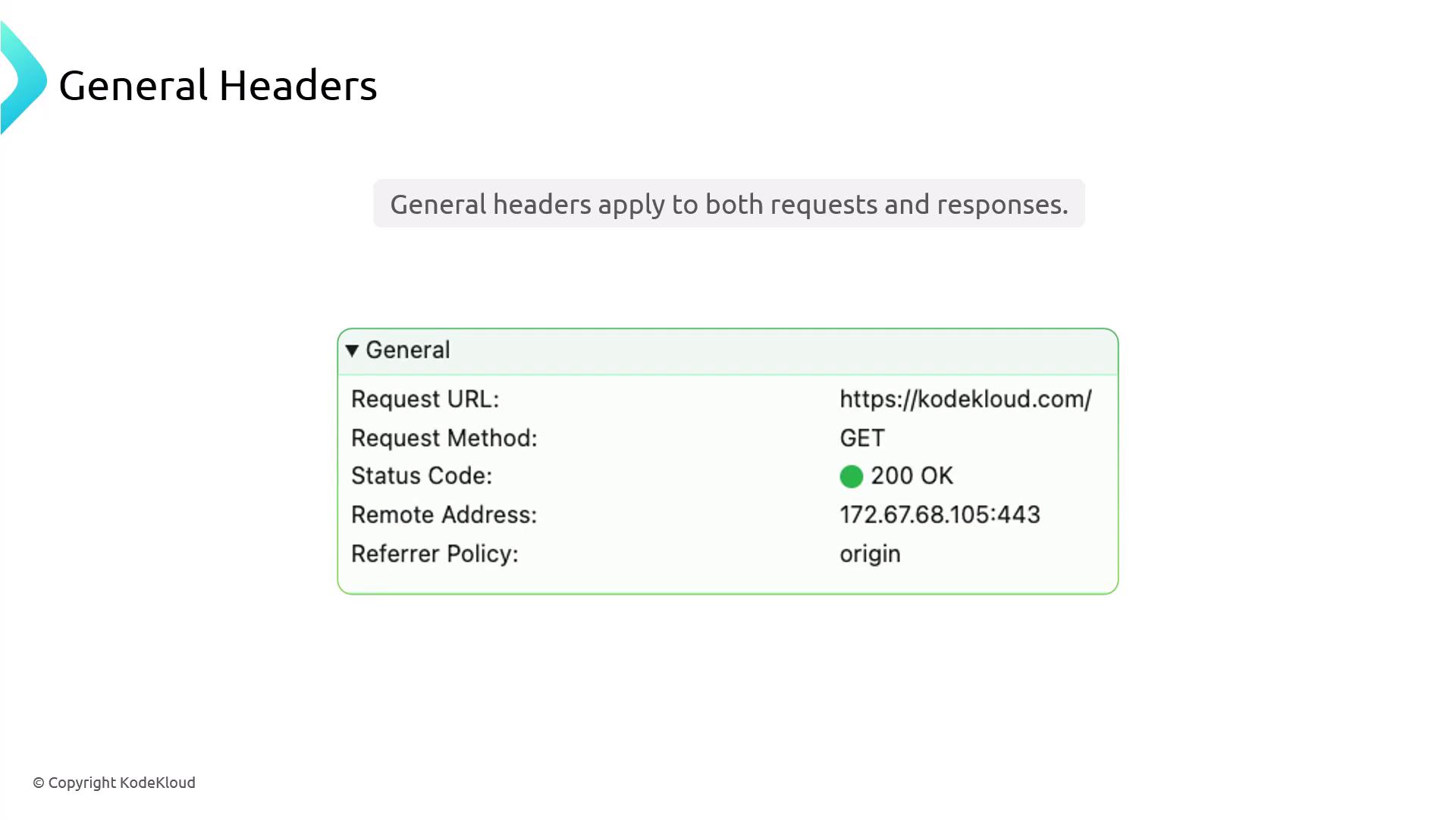
Request Headers
Clients send these headers to the server:
:authority: kodekloud.com
:method: GET
:path: /
:scheme: https
Accept: text/html,application/xhtml+xml
Accept-Encoding: gzip, deflate, br
Accept-Language: en-US,en;q=0.9
Cache-Control: max-age=0
Cookie: session=abcd1234
Referer: https://www.google.com/
User-Agent: Mozilla/5.0 (Macintosh; Intel Mac OS X 10_15_7)
- Accept: Media types the client prefers.
- User-Agent: Browser and OS identification.
- Accept-Language: Preferred languages.
- Cookie: Session data stored by the browser.
Response Headers
Servers include these headers in replies:
Age: 387887
Cache-Control: max-age=3600
Content-Encoding: br
Content-Type: text/html
Date: Fri, 17 Jan 2025 18:44:46 GMT
Server: cloudflare
Vary: Accept-Encoding
X-Cache: HIT
- Content-Type: Media type of the response body.
- Cache-Control: Caching policy instructions.
- Server: Server software identifier.
- X-Cache: Indicates cache hits or misses.
Security Headers
Security headers guard against common web threats like XSS, clickjacking, and mixed-content issues.
alt-svc: clear
cache-control: no-cache, no-store, max-age=0, must-revalidate
content-encoding: gzip
content-security-policy:
script-src 'nonce-6tCRsH62nR2cX-vHxm5A' 'strict-dynamic'
https: 'unsafe-eval'; object-src 'none'; base-uri 'self';
report-uri https://mail.google.com/mail/cspreport
content-type: text/html; charset=utf-8
strict-transport-security: max-age=1088400; includeSubDomains
x-frame-options: SAMEORIGIN
x-xss-protection: 0
Warning
Improperly configured security headers can break site functionality or leave vulnerabilities. Always test in staging before deploying.
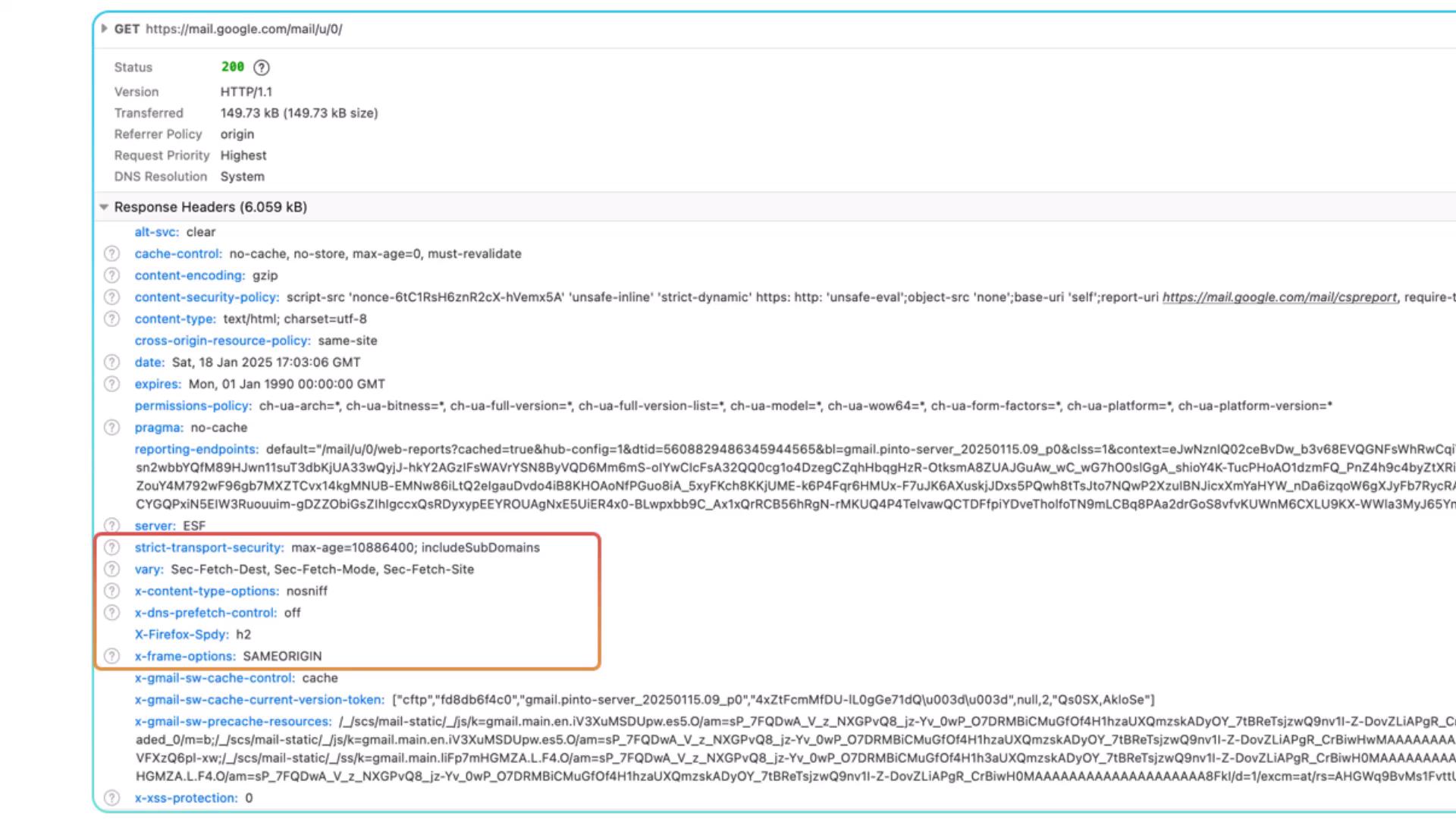
Authentication Headers
Authenticate requests using credentials or tokens:
Authorization: Basic QWxhZGRpbjpvcGVuIHNlc2FtZQ==
Authorization: Bearer eyJhbGciOiJIUzI1NiIsInR5cCI6IkpXVCJ9...
- Basic: Base64-encoded
username:password. - Bearer: Token-based (e.g., OAuth 2.0, JWT).
Caching Headers
Manage how clients and proxies cache responses:
Cache-Control: max-age=0, must-revalidate
Expires: Wed, 21 Oct 2025 07:28:00 GMT
ETag: "33a64df551425fcc55e4d42a148795d9f25f89d4"
X-Cache: Miss from cloudfront
- Cache-Control: Fine-grained caching instructions.
- Expires: Absolute expiry date/time.
- ETag: Entity tag for version validation.
CORS Headers
Enable controlled cross-origin requests to protect resources:
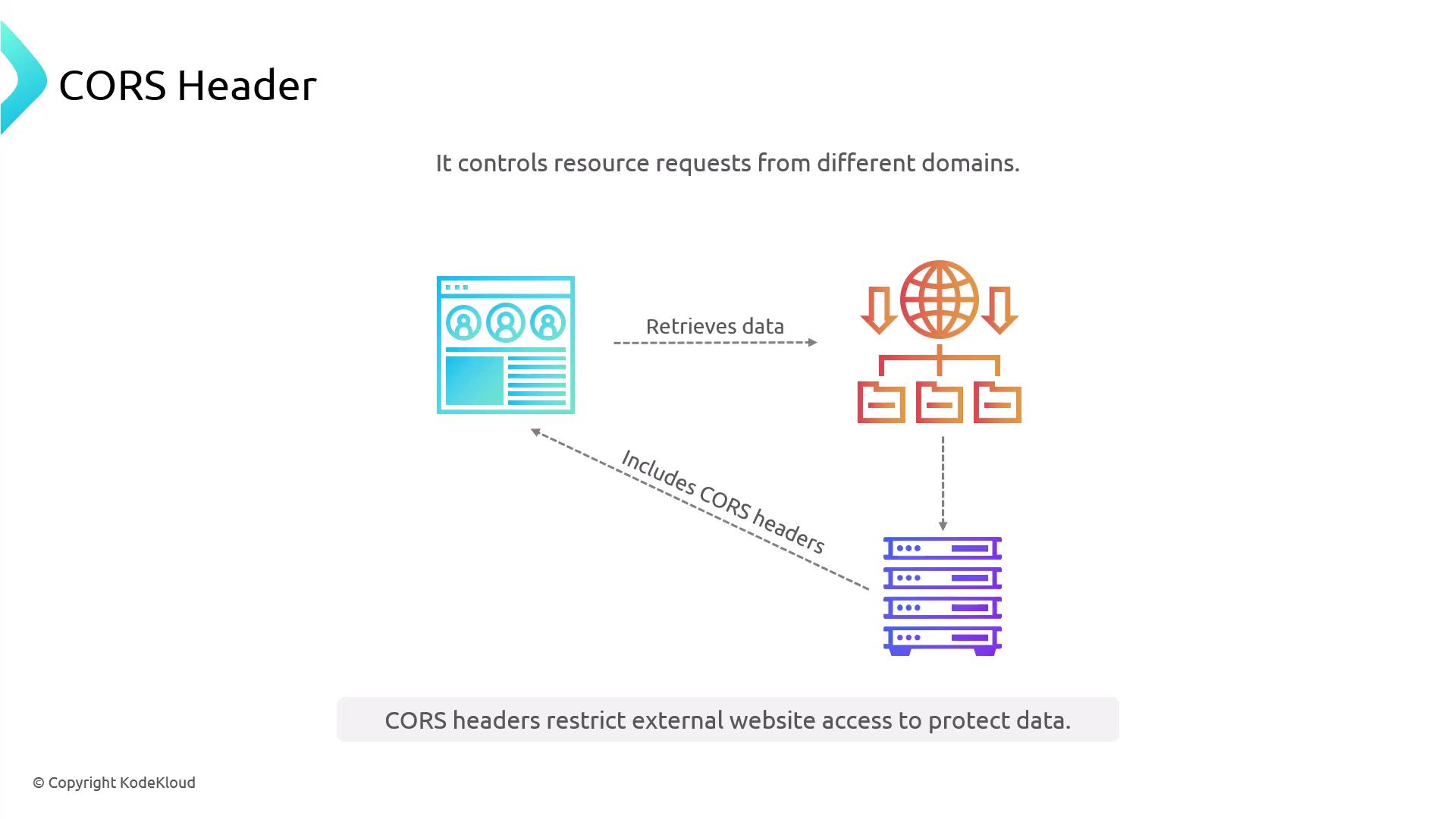
Access-Control-Allow-Origin: https://petexchangehk-frontend.vercel.app
Access-Control-Allow-Methods: GET, POST, PUT, DELETE
Access-Control-Allow-Headers: content-type, authorization
Access-Control-Allow-Credentials: true
Note
Browsers enforce CORS; servers must explicitly allow desired origins and methods.
Proxy Headers
When requests pass through load balancers or reverse proxies, these headers preserve client information:
Host: web:8001
Upgrade-Insecure-Requests: 1
User-Agent: Mozilla/5.0 (Windows NT 6.1; Win64; x64)
X-Forwarded-For: 192.168.122.4
X-Forwarded-Host: web.domain.com
X-Forwarded-Proto: https
X-Forwarded-Server: 172.19.0.5
X-Real-IP: 192.168.122.4
- X-Forwarded-For: Original client IP through multiple proxies.
- X-Forwarded-Host: Original
Hostheader. - X-Forwarded-Proto: Protocol used by the client.
- X-Real-IP: Direct client IP (single proxy scenario).
Custom Headers
Define your own headers for feature flags, tracing, or legacy integrations:
GET /api HTTP/1.1
Host: example.com
User-Agent: curl/8.1.2
Accept: */*
X-Custom-Header1: Value1
Custom headers must begin with X- (for legacy) or a vendor namespace.
Nginx Built-in Variables
Nginx uses $-prefixed variables to access request and server data dynamically.
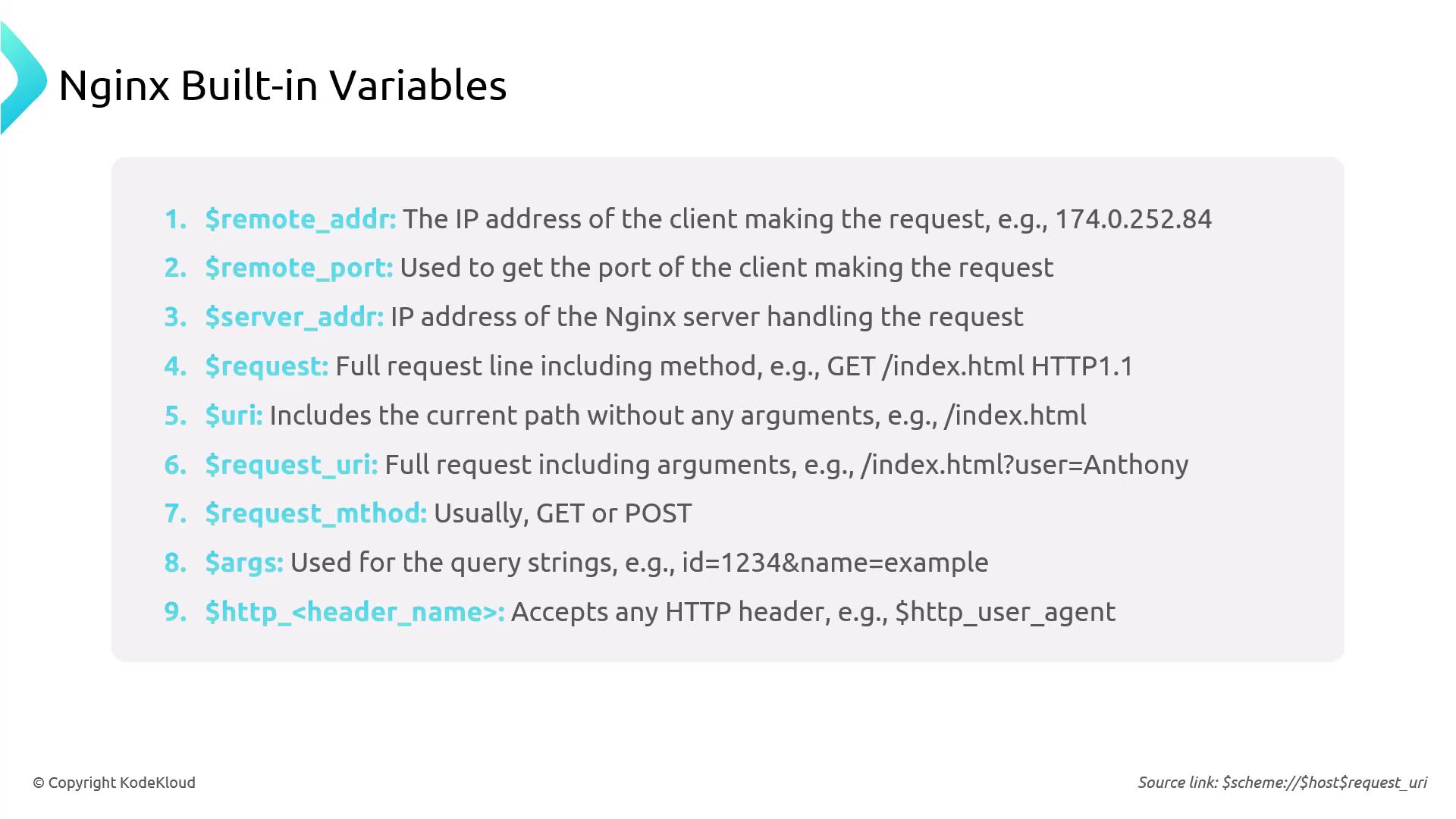
Common variables:
$remote_addr: Client IP address$host: Host header value$scheme: Protocol (httporhttps)$request_uri: Full request URI including query string
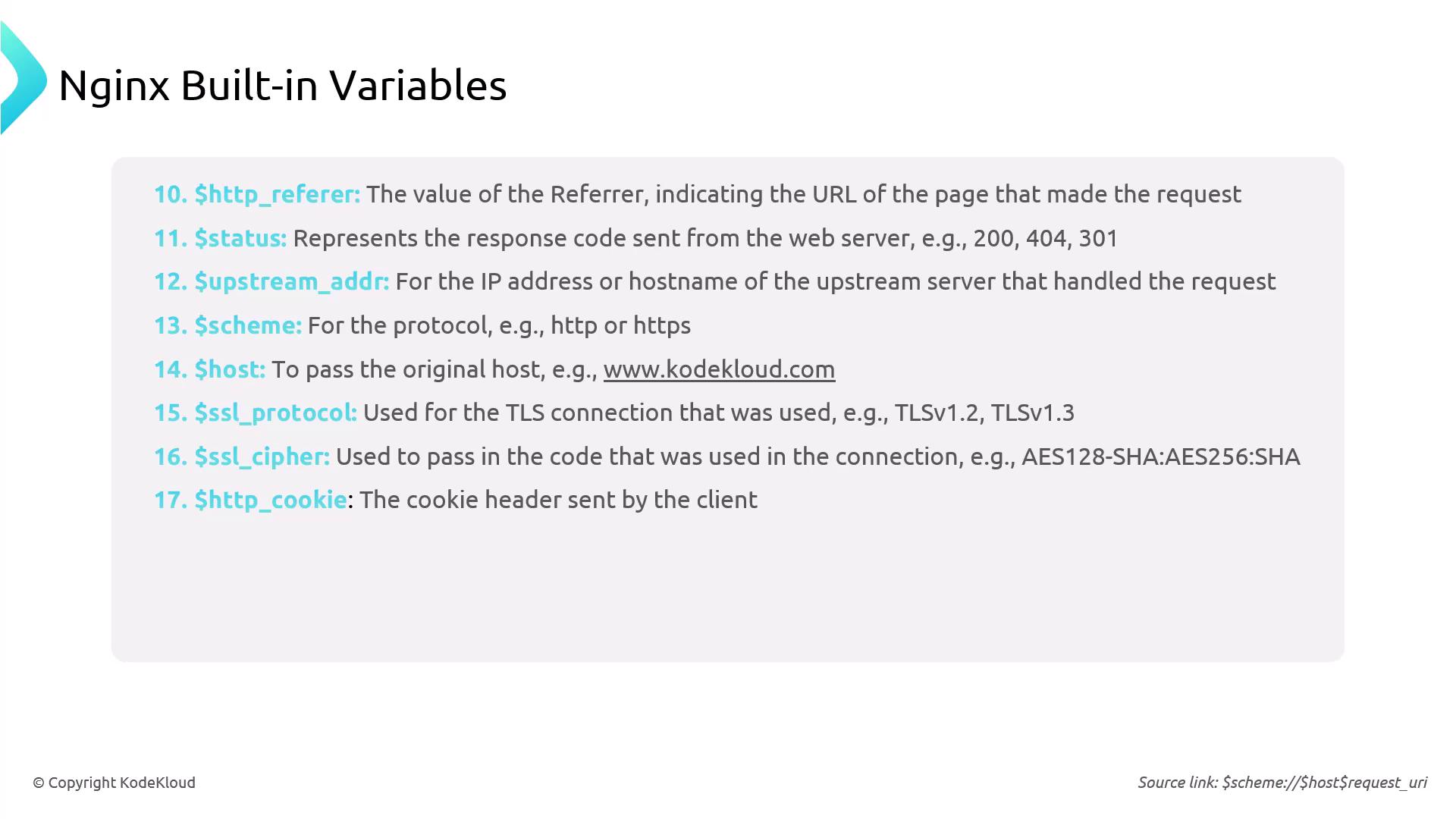
Combine variables to reconstruct the full URL:
$scheme://$host$request_uri
Example Nginx Configuration
Below is a sample Nginx server block that sets security headers and proxies traffic to an upstream backend:
server {
listen 80;
server_name honda.cars.com;
root /var/www/honda.cars.com/html;
index index.html;
# Security response headers
add_header Strict-Transport-Security "max-age=31536000; includeSubDomains; preload";
add_header X-Frame-Options "SAMEORIGIN";
add_header Content-Security-Policy "default-src 'self'";
add_header Referrer-Policy "origin";
location / {
# Preserve original client headers
proxy_set_header Host $host;
proxy_set_header X-Real-IP $remote_addr;
proxy_set_header X-Forwarded-For $proxy_add_x_forwarded_for;
proxy_set_header X-Forwarded-Proto $scheme;
proxy_pass http://backend_upstream;
}
}
- add_header: Appends headers to outbound responses.
- proxy_set_header: Customizes headers sent to upstream servers.
Links and References
Watch Video
Watch video content